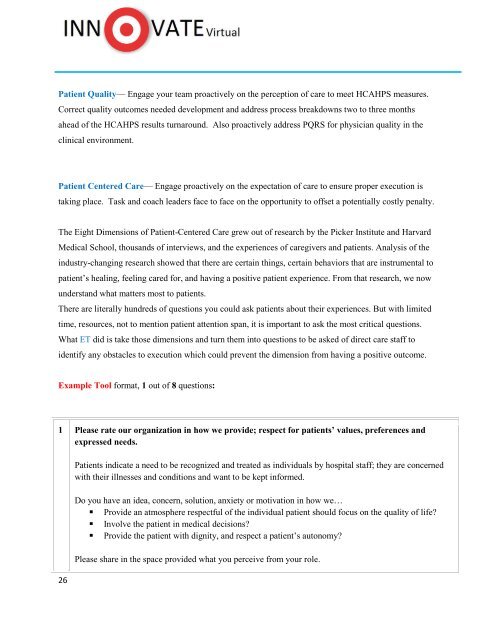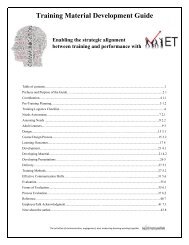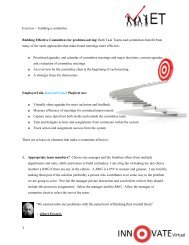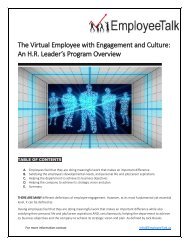InnovateVirtual - Targeted Communication
The communication and training resource book is actually more than 700 pages. I’d like to eventually make the whole thing available online but I need some feedback first. The book illustrates the use of web-based technology for engaging real-time measures, contribution, and delegated results. The book showcases EmployeeTalk Technology in the process, and examples dialogs and concepts in the application of methods, techniques, and tools. I focus on development in over forty core competencies that can help anyone wanting to grow with their organization. One of the main focuses is on follow-through actions, exercises, and other books to read to help performance growth.
The communication and training resource book is actually more than 700 pages. I’d like to eventually make the whole thing available online but I need some feedback first. The book illustrates the use of web-based technology for engaging real-time measures, contribution, and delegated results. The book showcases EmployeeTalk Technology in the process, and examples dialogs and concepts in the application of methods, techniques, and tools. I focus on development in over forty core competencies that can help anyone wanting to grow with their organization. One of the main focuses is on follow-through actions, exercises, and other books to read to help performance growth.
Create successful ePaper yourself
Turn your PDF publications into a flip-book with our unique Google optimized e-Paper software.
Patient Quality— Engage your team proactively on the perception of care to meet HCAHPS measures.<br />
Correct quality outcomes needed development and address process breakdowns two to three months<br />
ahead of the HCAHPS results turnaround. Also proactively address PQRS for physician quality in the<br />
clinical environment.<br />
Patient Centered Care— Engage proactively on the expectation of care to ensure proper execution is<br />
taking place. Task and coach leaders face to face on the opportunity to offset a potentially costly penalty.<br />
The Eight Dimensions of Patient-Centered Care grew out of research by the Picker Institute and Harvard<br />
Medical School, thousands of interviews, and the experiences of caregivers and patients. Analysis of the<br />
industry-changing research showed that there are certain things, certain behaviors that are instrumental to<br />
patient’s healing, feeling cared for, and having a positive patient experience. From that research, we now<br />
understand what matters most to patients.<br />
There are literally hundreds of questions you could ask patients about their experiences. But with limited<br />
time, resources, not to mention patient attention span, it is important to ask the most critical questions.<br />
What ET did is take those dimensions and turn them into questions to be asked of direct care staff to<br />
identify any obstacles to execution which could prevent the dimension from having a positive outcome.<br />
Example Tool format, 1 out of 8 questions:<br />
1 Please rate our organization in how we provide; respect for patients’ values, preferences and<br />
expressed needs.<br />
26<br />
Patients indicate a need to be recognized and treated as individuals by hospital staff; they are concerned<br />
with their illnesses and conditions and want to be kept informed.<br />
Do you have an idea, concern, solution, anxiety or motivation in how we…<br />
• Provide an atmosphere respectful of the individual patient should focus on the quality of life?<br />
• Involve the patient in medical decisions?<br />
• Provide the patient with dignity, and respect a patient’s autonomy?<br />
Please share in the space provided what you perceive from your role.







